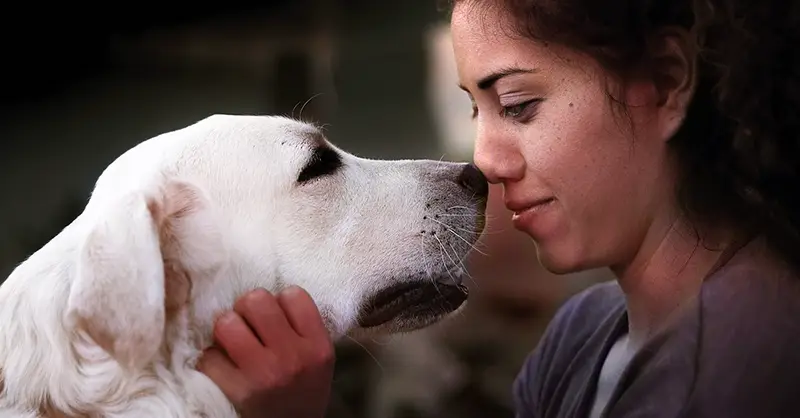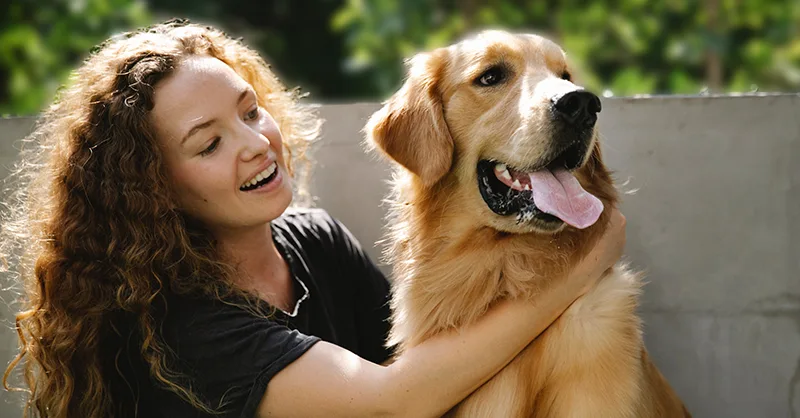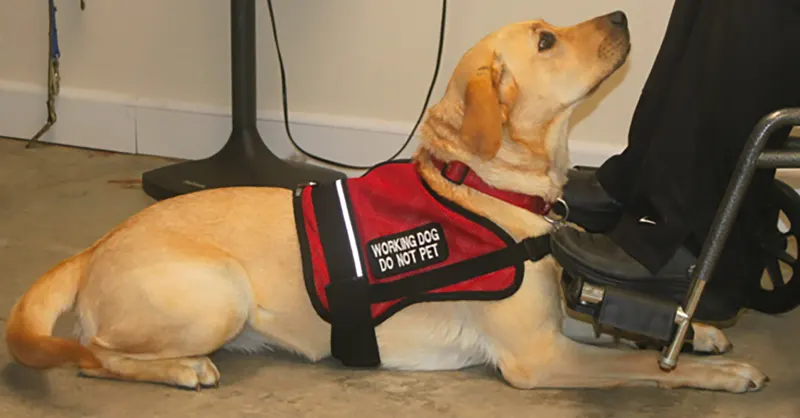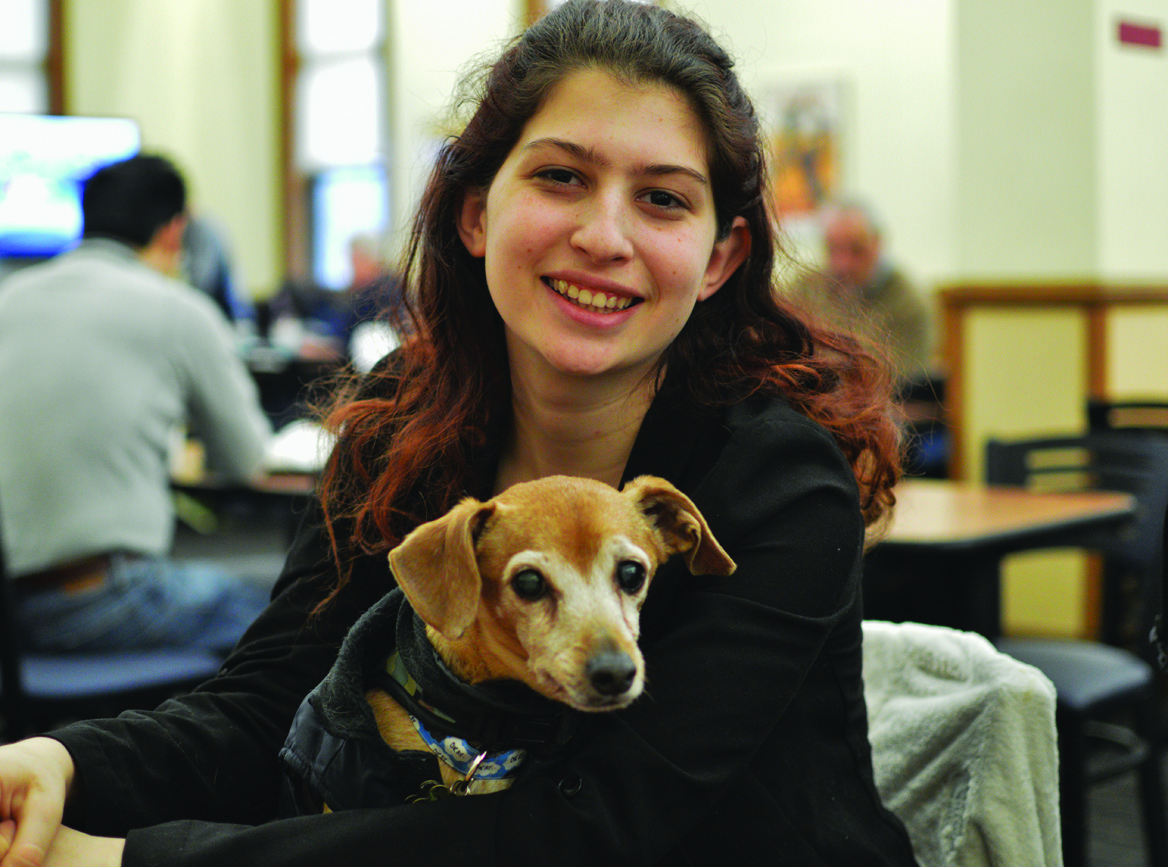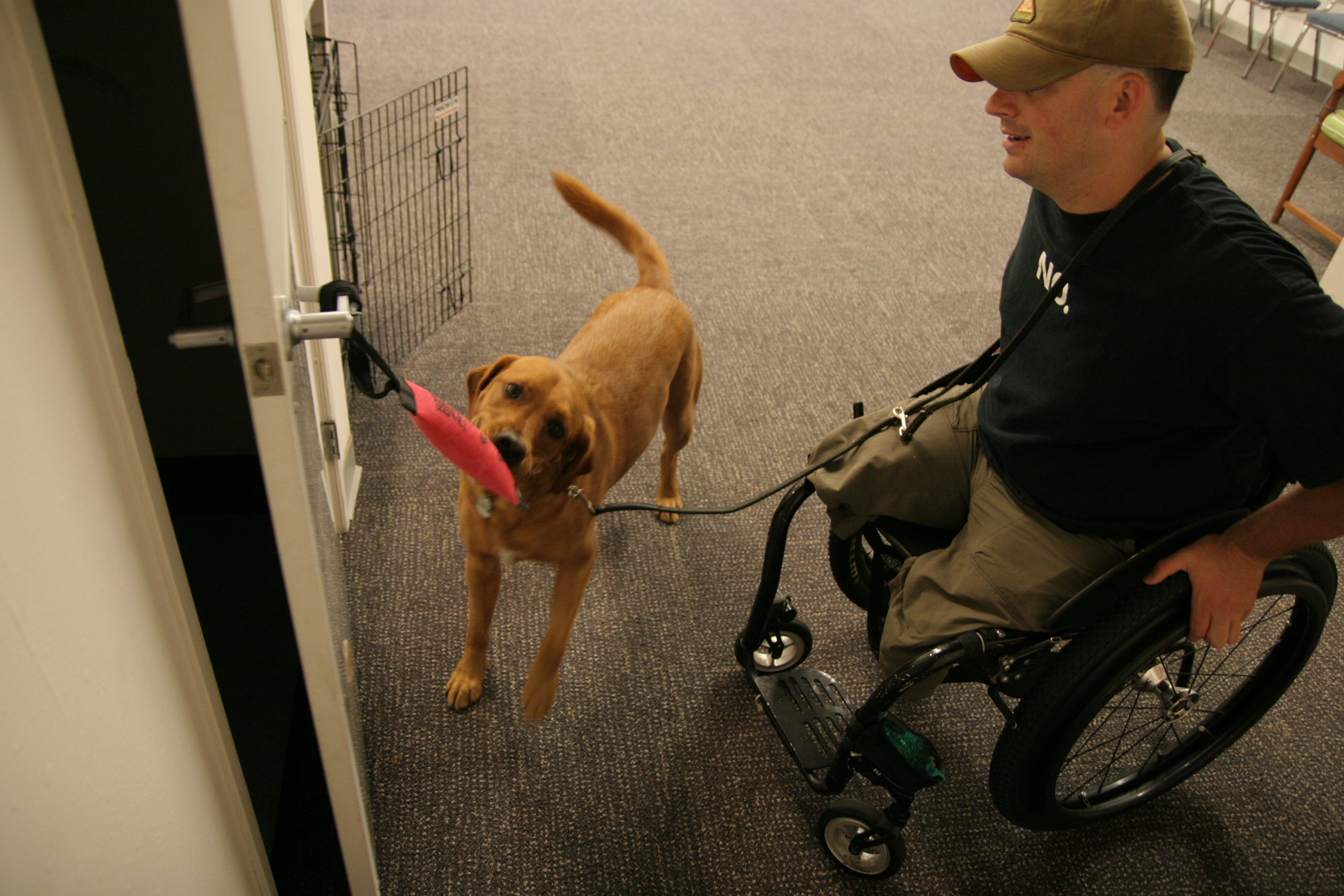Archive for the ‘News’ Category
There are many disabilities that are not visible to the eye. People with anxiety, PTSD, panic attacks, etc. do not exhibit visible symptoms and are usually judged when accompanied by service dogs and emotional support animals. The public needs to be educated about invisible disabilities and the need for service animals for people with these disabilities. We commend Notre Dame for their acceptance and progressive attitude towards mental illness service animals. Please read below for the full article.
Junior Ellen Chaleff’s dog, a Dachshund/rat terrier mix named Fred, is there when she wakes up in the morning. He’s there, wearing an NYPD coat, when she walks between classes. He’s there when she sits in class, when she eats at the dining hall, when she’s at Ultimate Frisbee practice and when she goes to bed at night.
And if Chaleff has a panic attack, he’s also there, curled up on her lap until it passes.
The first service dog for mental illness on campus, Fred has been at Notre Dame with Chaleff since last Halloween. Chaleff, who began showing symptoms of bipolar disorder in high school, said she found out about him after he was rescued from an abusive home. He already had training as an emotional support dog, making him easier to train further as a service animal. Professionals trained him to help with bipolar disorder, and Chaleff said she did the rest.
Service dog helping someone with mental illness
Photo courtesy of I am Notre Dame
“I trained him to be in public, to be in a restaurant, to be in a dining hall, to sit in a classroom,” she said.
Disability services coordinator Scott Howland said students requesting accommodation must provide documentation of their disability, and students requesting service animals must say why they need one, though they do not need proof of the animal’s training. He said the process varies from person to person.
“The key factor to any sort of accommodation request, regardless of what it is, is we would want to look at all the variables, look at the case on an individual basis to make the best decision,” he said. “We would never automatically think that a similar request is the same as the first.”
Chaleff said she worked with Notre Dame’s Disability Services to make sure her professors, Notre Dame Food Services and Office of Housing were aware of and accommodating of Fred.
Chaleff and Disability Services also worked with lawyers. Howland said students with service dogs, as with any disability, are protected by the Americans with Disabilities Act, Section 504 of the Rehabilitation Act, which prohibits discrimination based on disability and the Fair Housing Act, which prohibits denial of housing because of disability.
Service dogs for mental illness are trickier, Howland said, because there is less of a precedent on how to accommodate them.
“The whole issue of service animals and emotional support animals is still somewhat of a new topic on college campuses,” he said. “There’s been recent court cases regarding that, so a lot of schools will look to those court cases — how this issue was resolved between this individual and this college — and use that as a way to guide their own policies or their own procedures.”
Now, with only a few location exceptions, Chaleff said Fred can go anywhere she does. Off campus, she said employees will sometimes be reluctant to let her and Fred into businesses because they don’t believe Fred is a service dog, or people will make assumptions about why Fred is there — such as that Chaleff is blind.
On campus, Chaleff said people take Fred in stride.
“The first few months, a bunch of people ran up to him, but now he’s just out there,” she said.
In class, Chaleff said Fred normally sleeps on a blanket next to her desk. He has also quickly become acclimated to her friends, especially on the Ultimate Frisbee team, she said.
“We were at a game watch of 30 people, and I was concerned about how he would work,” she said. “I might have to drive him home really quick, but he just ran around people, came back to me, walked around, tried to steal someone’s sandwich, then slept on [my friend] Caitlyn’s lap. It’s what happens.”
Since she has only had Fred for a few months, Chaleff said he still has improvements to make.
“His service stuff, he knows how to do,” she said. “He knows how to detect panic attacks and depression, and he can detect that in other people, not just me. [But] he doesn’t know ‘sit.’ He walks into things a lot. He gets himself entangled around tables. It’s great.”
Since getting Fred, Chaleff said her life has improved dramatically.
“I don’t have to skip as many classes; I can go out more and do things,” she said. “I have these periods where I feel like I can’t eat physically, and he won’t eat while I’m doing that. And I feel guilty, so I go to the dining hall, which annoys me, but it does what it’s supposed to do.”
Chaleff said she hopes to raise awareness of the possibility of service dogs for mental illness. In December, she started a blog about her experiences with Fred, and in January, she and Fred were featured on the I Am Notre Dame blog.
“I’m hoping that other people do try out service dogs because I’ve heard a lot of great things about them, and me having him for a few months has helped a lot,” she said. “It’s a responsibility, obviously, but it’s definitely worth the trade-off.”
h/t to the The Observer
Diet is a very important part of keeping your dog healthy. There have been many articles about dog food made in China that had harmful ingredients. A raw food diet is the most natural and healthiest way to feed your favorite canine. Here are a few arguments about feeding your dog a raw food diet. Please remember to slowly ween your dog off of their current diet so they do not experience any digestion problems.
Raw Meat
Raw Diet Benefits for Dogs
Cleaner teeth and healthy gums: Your dog’s teeth and gums will be cleaner and healthier from chewing raw meaty bones. When your dog starts eating raw meat with consumable bones; you will learn that raw meat and bones do not allow for plaque to build up. The crunching of small bones by your dog naturally provides scraping for his teeth. Raw bones are easily digested and they are good source of calcium and roughage for cleaning the teeth and gums naturally. On the other hand, canned dog food consists of highly processed food with added fat and preservatives, which will most likely cause plaque.
Keep extra weight off: Raw diet ensures that your dog stays lean and strong, and lean dogs live longer. High protein raw diets will help your dog lose weight without losing muscle mass. On a high raw protein diet, approximately a seventh of the weight loss will be muscle and about 85% of the weight loss will be fat. The bottom line is that to maintain your dog’s muscles, his body needs protein. Raw diet helps you improve your dog’s feeling of fullness, so your dog is less of food pest when dieting, and it should be easier to keep him lean. Lean dogs live longer, have stronger immune system, and have lower blood pressure.
Improved muscle strength and stability: The tearing, shredding and meaty bone crushing activity that comes with raw diet is helpful in building up strength in your dog’s neck, jaws, shoulder, and back muscles. Raw dog diet lifestyle’s increased activity will strengthen your dog skeletal as well as heart muscles, which enhances cardiovascular functioning and improves balance and flexibility. The bones and natural cartilage in the diet will grow your dog strong bones and healthy joints.
Lower risk of cancer: Your dog is less likely to get cancer if he is fed on raw diet. Consumption of raw green vegetables is essentially important for dogs that eat dry foods. Dry foods are predisposed to aflatoxin contamination. Despite the fact that smaller amounts of aflatoxin are considered normal in the grains used for dog foods, green vegetables can significantly help offset the contamination element’s negative effects. Green vegetables are composed of chlorophyll, which is known to delay the onset of signs of liver cancer caused from the consumption of aflatoxin-contaminated grains. Make sure to balance the fats and complete your dog’s nutrition with fresh foods.
Better digestion and improved stool quality: When you give your dog raw food, he starts to eat by working on his jaws and teeth on the meaty bones and fleshy meat. Your dog will eat slowly, providing himself with full enjoyment. As he continues to chew, more gastric juice is secreted so that the food can be digested properly. Firmer as well as smaller stools with less smell are produced by your dog after consuming raw diet. Your dog’s stool may contain powdery white material from bones, which is absolutely normal. Better digestion leads to small and firm stool, which generally improves your dog nutrient absorption.
Better eye health: When you feed your dog raw diet from his young age, he will have fewer eye problems as he grows old. In order to maintain good eye health, raw diet with balanced fats will improve your dog’s retina. The amount of fat, protein, and carbs based upon raw diet will provide your dog with essential antioxidants among other nutrients known to protect the eyes. These may include vitamins D and E, lutein from egg yolks, and zinc. The sardines and oysters in the raw diet provide natural source of zinc. Ideally, a raw diet provides your dog with naturally balanced nutrition.
Service Dog Services and Tasks
Service Dog Services: What Service Dogs Do for Others
Service dogs perform a wide number of tasks on a daily basis for their trainers and owners. These tasks can depend upon the trainer or owner that they have been paired with, as well as their needs. Here, we will take a look at service dog services. We will tell you when and why service dog services differ from dog to dog and person to person. Then we will provide you with example service dog services. Lastly, we will tell you where you can learn more about service dogs.
Training Depends on the Disability
Service dog services are tailored based upon what the trainer or owner needs. For example, a person who is deaf will need different service dog services than a person who is in a wheelchair. Many dogs are trained with a particular disability or owner in mind. In this way they can be trained to help with very specific tasks, from calming their owner down to fetching things around the house, which their particular owners truly need in their service animal. Both owner and dog gain something from this particular relationship. One gains greater independence while another gains an owner that truly loves them.
Example Tasks
Here are a few example service dog services:
Helping with balance while walking or going up and down stairs. Calming down patients who might need calming down on a regular basis. Get dropped or needed objects. Find help, if needed. Help with crossing the road and guiding their owners. Turning on and off lights and other switches. Helping patients get in and out of wheelchairs. Carry various items for the patient. Open and close doors. Helping clients to put on or take off shoes, coats, or other items. Be a constant companion and friend to their owners.Learning More
Want to learn more about service dog services, training programs, and more? If so, the biggest resource at your fingertips is the internet. There you can find webpages about training programs, how-to train your own service dogs, videos of how service dogs can help, and much more. If you have not thought about becoming a service dog trainer, but have a passion for animals, you should consider it. Service dog services are invaluable to those that are reliant on them on a daily basis. You could be helping an animal, as well as a future owner!
